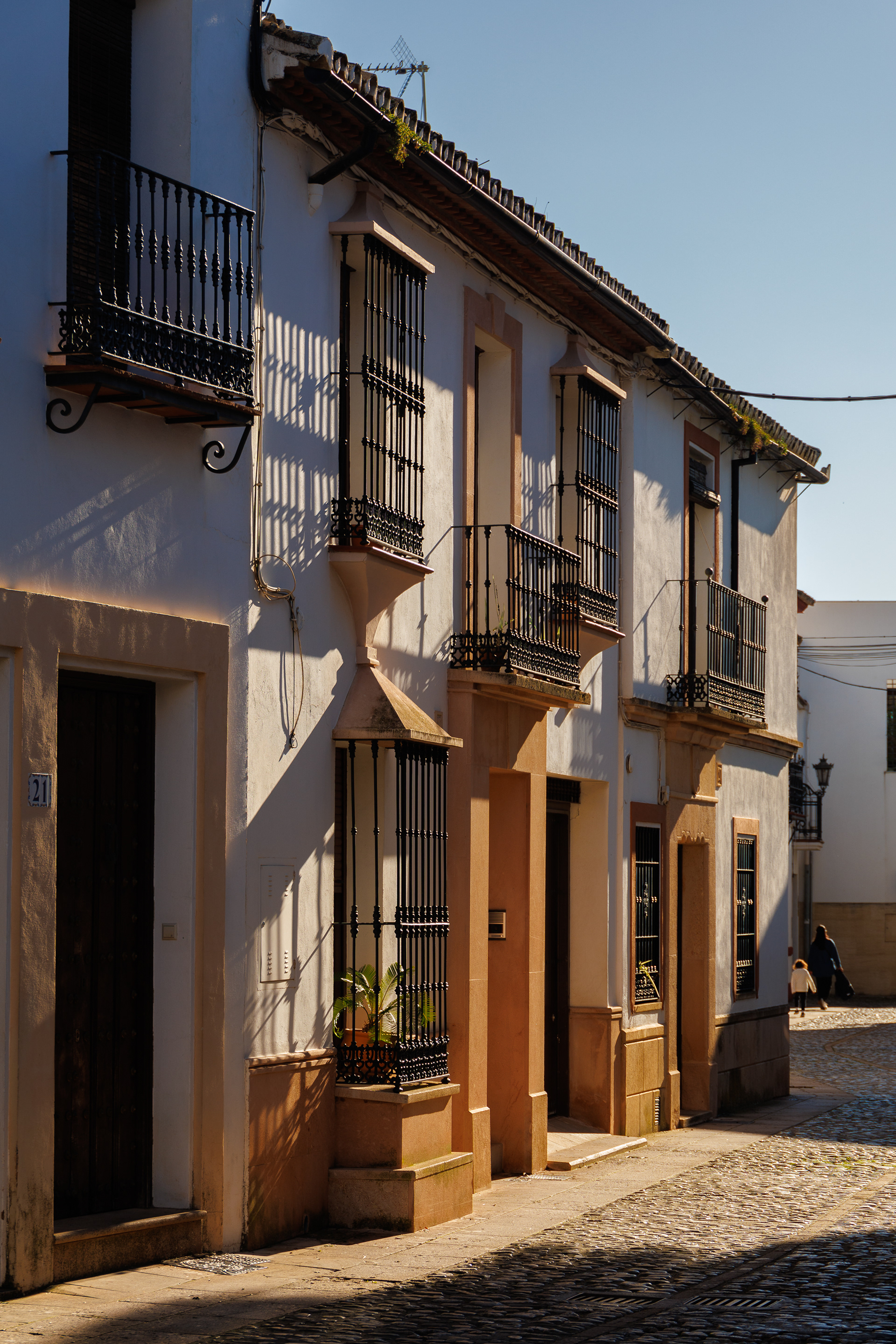It was time to leave the sea-side glamour of Marbella and head in-land to Ronda, a city built on the edge of a cliff in the Sierra de las Nieves National Park.
I took the bus; a journey which did not disappoint as it weaved its way through the mountains, but little could prepare me for the literally jaw-dropping setting of Ronda. It is, quite simply, stunning.
It really is one of those places of which you cannot get enough; I found myself just wanting to stand and gaze out at the scenery and trust me, there is a lot of scenery to gaze out upon. Not only is the city built on a cliff edge giving it an amazing perspective over the surrounding area, but it spans a deep gorge (El Tajo) carved out by the Guadalevin river.
PUENTE NUEVO
And spanning the two sides of the gorge is the most photographed bridge, Puente Nuevo, the tallest of three bridges being some 120 metres above the canyon floor. Truly astonishing in scale from wherever you view it.
And the rock formations themselves are incredible, made even more dramatic as the day moves towards sunset.
CUENCA GARDENS
These gardens are a recent development in 1975 and are named after a city (Cuenca!) with which Ronda was twinned in the same year.
Like me, some people in the UK may remember the concept of town-twinning which was viewed with great suspicion in the UK, largely because it seemed to mostly involve expenses-paid trips for councillors to visit much nicer places in Europe.
It's good to have something attractive like this come out of the scheme. I don't recall any positive benefits where I lived...
In the photo above, you can see another bridge, dubbed the Arab Bridge (also called Puente San Miguel) which was right beside the Arabic Baths, of which more later. Beyond it is a third bridge although not visible in this photo, known as the Roman Bridge (Puente Viejo [old]). So that means the gigantic Puerto Nuevo [new] bridge is indeed the newest of the three, being completed in 1793.
Below, a close up of the Arab Bridge, and second photo below shows the bridge leading through the town gate. Shortly beyond this gate is found the Arabic Baths.
Below is the Roman Bridge, the smallest of three and considerably lower in elevation than the later bridges.
THE ARABIC BATHS
Ronda has a long history dating from prehistoric times, and as with other cities in Spain, there remains architectural evidence of the different periods in Spain's history.
One of the most fascinating sites I visited was the Arabic baths, originally built in the 13th to 14th centuries, during the period of Islamic rule.
The photo below is the reception area of the baths; the roof has long gone, but the ceiling would have been domed above the preserved brick arches which would have surrounded a small pool and drinking fountain.
The first photo below shows the entrance to the first chamber which is a cold room where people could wash in one of two pools at either end and prepare to enter into the second warm chamber (second photo) and third hot chamber (not shown) before returning to the cold room to cool down and relax.
Roman technology was deployed in building these baths including building an acquaduct of which little remains today.
Casa del Rey Moro
The first thing you discover on visiting this place is that isn't what it purports to be: the house in which a Moorish king might have lived. It was built in the 18th century long after the Moors had been dispatched and the so-called Moorish gardens are even more recent (1912) and designed by a Frenchman Jean Claude Forestier.
Nonetheless, I thought it well worth visiting as it is a very pleasant place in which to spend time.
However I nearly missed its most impressive part and only stumbled upon it looking for the toilet (which I never found, by the way).
But first the gardens which are worth a photo or two:
And the gardens are home to a number of peacocks who declined to show me their full plumage on this occasion, but you can see the potential in the photo below.
And so on to the second major discovery (or perhaps the third if you count the fact that the alleged toilets do not appear to exist or, at the very least, are well hidden) and that is the existence of a staircase under the house all the way down to bottom of the gorge.
This is the only part of the site which really does date back to the Moorish era and is known as the water mine. It was built to facilitate bringing water up from the gorge in the event that the town's water supply was cut off by a besieging army. Walking up the stairs without water containers was hard enough, I can tell you, so perhaps that is why there was a saying at the time "in Ronda you die carrying water skins"!
RONDA CITY
The rest of the city is very pleasant indeed, with large squares and attractive churches and other buildings, including the oldest bullfighting ring in Spain - sadly closed for exploration during my visit.

It remains to say that if you are ever in this part of the world, do not neglect to pay a visit. And if you can, stay the night - it is besieged by tour groups on day trips from other places between about 10am and 5pm so those morning and evening hours are precious to see the city at peace.